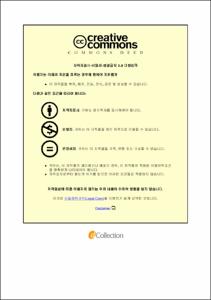텍스트 마이닝을 활용한 냉동 교육과정의 동향 분석
- Alternative Title
- Analysis of Trends on National Curriculum in Refrigeration Using Text Mining
- Abstract
- In this study, the purpose and semantic structure of the curriculum for the refrigeration course using text mining were analyzed.
According to the results from the analysis of the fishery and shipping related refrigeration course, high-frequency words are 'refrigeration device' and 'refrigeration equipment' in the 6th edition for the refrigeration curriculum, 'refrigeration facilities', 'refrigeration device', and 'general refrigeration' in the 7th edition, 'refrigeration facilities' and 'air conditioning' in the 2007 revised refrigeration curriculum, 'air conditioning', 'refrigeration ', and 'refrigeration air conditioning', and 'refrigeration air conditioning', 'boiler', and 'field' in the revised 2009 refrigeration curriculum.
Term Freqeuncy-Inverse Document Frequency (TF-IDF) and semantic network, which can be considered the most representative subject word of each era, allowed us to identify the semantic structure of the curriculum. Among them, the subject words that are consistently addressed in the refrigeration curriculum are 'refrigeration unit', 'air conditioning', and 'refrigeration facilities'. The "refrigeration equipment" is a learning element that is based on the subject, suggesting that teachers at schools are required to teach students. As the level of social interest in terms of air pollution and quality of life increases, the word "air conditioning" began to appear as a top word in the 7th edition for the refrigeration curriculum and have shown the highest frequency of occurence in the 2007 revised curriculum. This indicates that the national curriculum reflects various social needs and realities. The word "refrigeration facilities" refers to the structures made up of refrigeration devices, which can be considered adding practicality to the conceptual elements covered in "refrigeration devices".
In the 2015 revised refrigeration curriculum, the words, 'boiler' and 'field' can be noted. This is presumed to be the result of reflecting the NCS (National Occupational Ability Standards), and it is considered that educational activities should be focused on strengthening field capabilities, focusing on learning factors related to "heat source equipment" that contains "freezing devices" and "boiler".
A total of six topics from LDA analysis(refrigeration teaching and learning methods, basic concepts of refrigeration air conditioning facilities, understanding of air conditioning facilities, maintenance and management of air conditioning devices, education on heat source equipment) revealed potential subjects behind the refrigeration curriculum.
The revised 2007 curriculum included the 'understanding of air-conditioning facilities', the 2009 revised curriculum contained 'maintenance and management of refrigeration facilities', and the 2015 revised curriculum have 'education on heat source facilities'.
The emergence of these topics and the steep growth rate of its frequency clearly show what topics were highlighted in each curriculum period. Since early 2000, the issue of air pollution, which has emerged as a social concern, has been reflected as a topic of understanding air conditioning, and the topics "maintenance and management of refrigeration facilities" and "understanding of refrigeration air conditioning facilities" began to emerge more prominent than other times, reflecting the era's demand for creative talent education system which was emphasized in the 2007 and 2009 refrigeration curriculum.
In addition, in the 2015 revised refrigeration curriculum, which established a job-oriented vocational education system based on the National Service Competency Standards (NCS), "heat source equipment education" was reflected in the level of national demand. If the themes and semantic structures of the curriculum for the refrigeration course analyzed in this study help teachers teaching activities and students develop their job skills, the education for refrigeration course at school sites might be more comprehensive and systematic.
- Issued Date
- 2021
- Awarded Date
- 2021. 8
- Type
- Dissertation
- Publisher
- 부경대학교
- Alternative Author(s)
- Moon. Hee Sung
- Affiliation
- 부경대학교 교육대학원
- Department
- 교육대학원 수산교육전공
- Advisor
- 박종운
- Table Of Contents
- Ⅰ. 서론 1
1. 연구의 필요성 및 목적 1
2. 연구문제 5
3. 용어의 정의 6
Ⅱ. 이론적 배경 11
1. 냉동 교육과정의 변화 11
2. 수산계 특성화고등학교에서의 냉동 관련 학과 현황 18
Ⅲ. 연구 방법 22
1. 분석 대상 22
2. 분석 방법 23
Ⅳ. 연구 결과 35
1. 수산·해운 계열 교육과정 분석 결과 35
2. 냉동 교과 교육과정 분석 결과 38
Ⅴ. 결론 및 제언 70
1. 결론 70
2. 제언 75
참고 문헌 78
- Degree
- Master
- Files in This Item:
-
-
Download
 텍스트 마이닝을 활용한 냉동 교육과정의 동향 분석.pdf
기타 데이터 / 2.15 MB / Adobe PDF
텍스트 마이닝을 활용한 냉동 교육과정의 동향 분석.pdf
기타 데이터 / 2.15 MB / Adobe PDF
-
Items in Repository are protected by copyright, with all rights reserved, unless otherwise indicated.